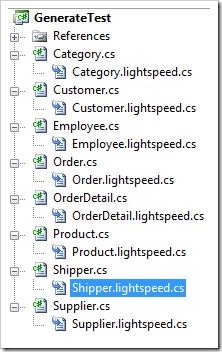I’ve been using my macbook as my personal and work pc. So I’ve had windows vista installed on it for all this time. While in the beginning everything seemed to work just fine. This week my vista box didn’t want to move if its live depended on it. So I upgraded my vista install to an XP install. So far the XP machine is heaps faster than the vista box. It has the same software installed as my vista box and yet it works suprisingly better.
The only thing that kept me on vista was IIS7 because I like to use my projects as roots not as virtualdirs. I do most of my development as webdevelopment, but then again it’s rare that I’m working on a project that needs more than one root website, so I let that go.
I care most about speed or lack thereof and in my previous setup it was definitely lack thereof.
So I thought I’d share some of my thoughts around switching.
OSX and windows is the combination that can do it all. I use visual studio with resharper through parallels and with XP it seems to be able to keep up with my typing.
Explorer on Vista is the best file browser I’ve ever used. Finder on OSX is utter crap, the UI is crappy and the UX is just egregious (thanks to sbellware for teaching me this word).
I use paid for and use Pathfinder on my OSX and that is more usable although a bit heavyweight for something that should just enumerate the filesystem.
Somebody didn’t think that menubar through properly because people nowadays use 2 monitors or more, having consistent shortcuts would make this less of an issue.
Consistency on keyboard shortcuts is something I miss but got over it and have a post where I explain what I did to make it work slightly better http://flanders.co.nz/2008/02/07/more-on-mac-keybindings/
And that was about all the bad news I have apart from the fact that my macbook pro can get incredibly hot. This can be remedied to some extent by installing smcfancontrol
Now onto the good news.
Configuration on the filesystem is so much better than having a registry hive that gets corrupted now and again.
The speed of my OSX is great, startup time is much shorter.
The whole experience of organising my personal stuff like photos, music and how it integrates in the OS and other programs is fantastic. I don’t want to go back to a broken model for this.
Sleep just works and i’m not hoping and praying that when i use it my box will recover from it. It’s incredibly light and the battery life of 4 hours without windows running or 2.5 hours with windows running is still very ok for me.
In terms of UI slickness I have to give the advantage to a linux distro with Compiz enabled they give you the freedom to choose how your computer behaves on certain actions instead of no options on windows and 2 choices on OSX.
I don’t think Apple has innovated much on an OS level apart from the Dock. IMHO OSX isn’t perfect but it is really great at its job and stays out of my way.









